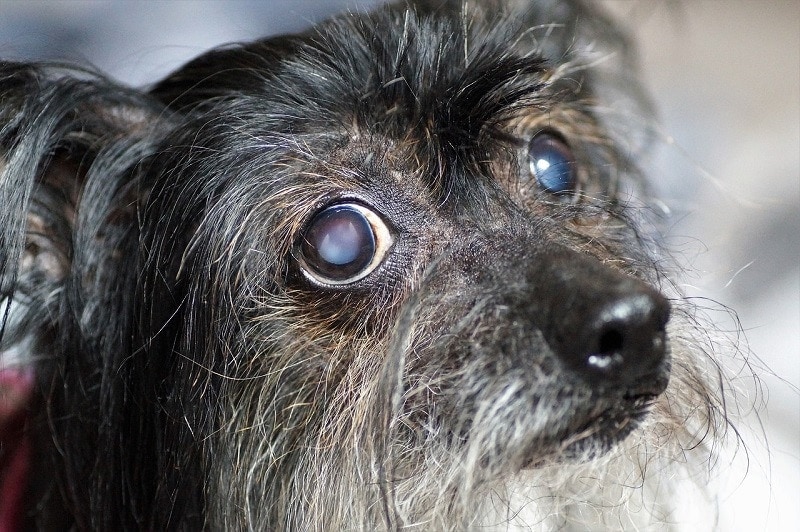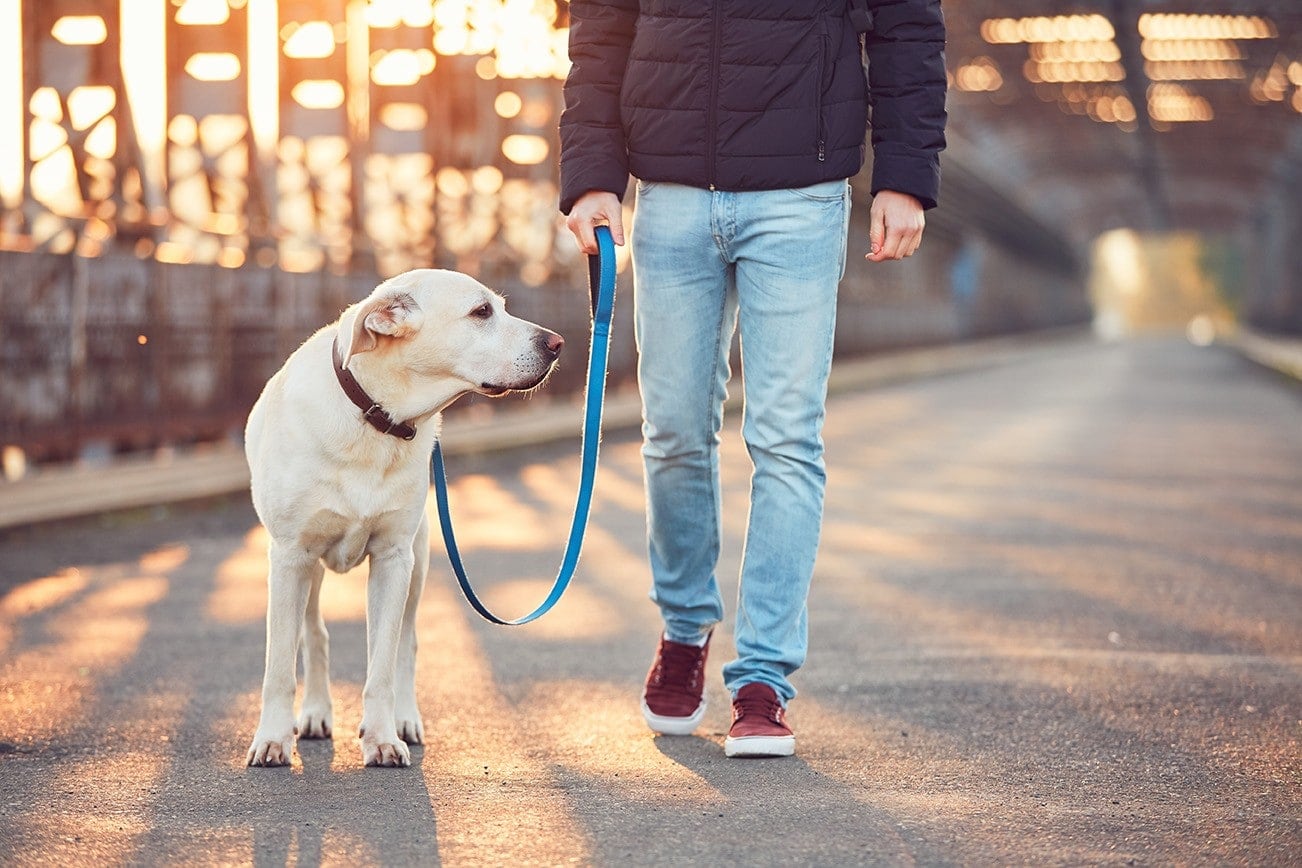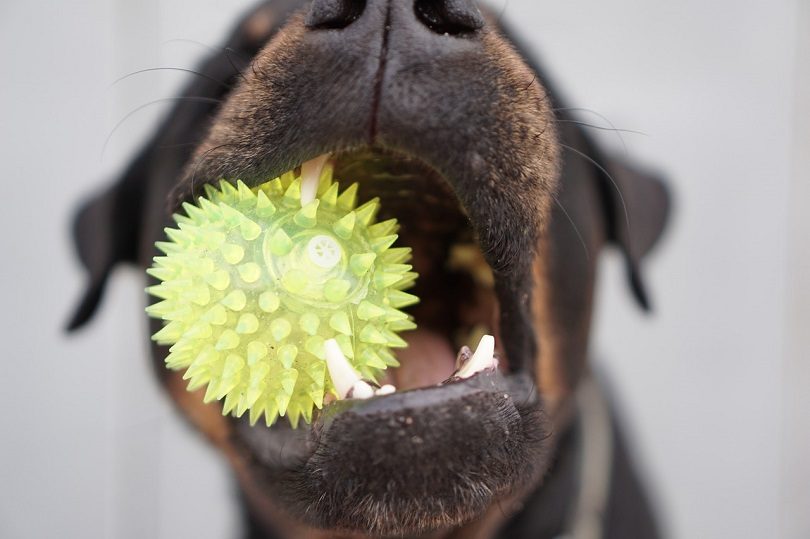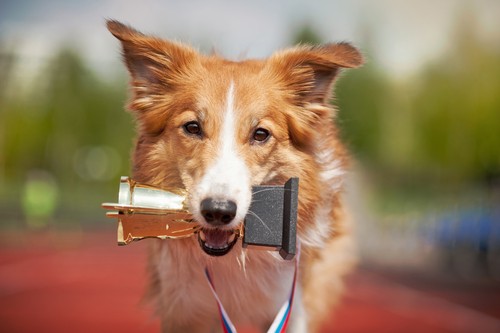How to Care For a Blind Dog: 15 Expert Tips

Updated on

Any creature with vision can eventually lose it for reasons like a health complication or just growing old, including dogs. Some breeds are more prone to blindness than others, while certain dogs might have an abnormality that causes them to lose their sight.
Whatever reason that your dog ends up losing their vision, it doesn’t mean that their life stops. There are so many things left for them to sniff out and explore! Here are 15 tips to make both your life and your dog’s life better when they are blind.
Signs of Dog Going Blind
Don’t treat your dog like they are blind or going blind unless your veterinarian has informed you that they are indeed losing their vision. The signs of vision loss can be attributed to many other diseases that require different treatments.1
- Difficulty finding well-known or apparent objects
- More anxious and easier to startle
- Increased clumsiness
- Noticeable eye pain
- Low energy levels
- Cloudiness or red blood vessels in their eyes
Vision loss can be caused by conditions like glaucoma and cataracts and might be repaired if caught early enough. It can also occur quite slowly over a long period. That is especially true for older dogs as they continue to advance in age.
How to Care For a Blind Dog

Once your pup has been diagnosed with vision loss that cannot be reversed or stopped, it is time to prepare. It will take adapting for both of you, but it doesn’t need to be a significant cause of stress or anxiety.
These 15 tips can help you equip your house and your blind dog for life in the future. Give yourself and your dog enough time to adjust to the tweaked way of living, and be understanding with your pet. In the end, it will be easier for both of you as you navigate the world together.
Top 15 Tips When Caring For a Blind Dog
1. Dog-proof your home
Start the process by dog-proofing your home for a blind pet. It will help keep your pup safe and help you minimize your worry when you are away from home.
Safeguard corners that could be easy for your dog to bump into and hurt themselves. Don’t give them access to spaces that they could fall from. You can put baby gates around the stairs so until your dog is ready to do it blindly, they can only go up or down the stairs with your help.
2. Form and maintain a routine

All dogs appreciate a routine, but blind dogs will appreciate it even more than other dogs. As much as you possibly can, stick to the same daily schedule. Take them for walks at the same time, and go to similar places.
While dogs that can see will enjoy exploring new places, sights, and smells, blind dogs often feel more comfortable going to the same place. There will always be new smells, but overall, it will be a similar experience, and they will know that they are in a safe area.
3. Don’t move their items around
Do not move your dog’s things around. Keep their food and water bowl in the same place. If you have to pick it up to clean it, try to put it back exactly where it was.
If you have dog toys for your pup, keep them in an open container in the same spot. This way, they can go in and find something to chew on by themselves. Even moving something a couple of inches can confuse them into thinking that it isn’t there at all.
4. Give them a safe zone
Besides dog-proofing your home, give them a spot that is ultimately their own and entirely safe. This is especially helpful if you have visitors come over, particularly children. The sudden movements and loud noises can easily startle a dog and make them feel unsafe.
Give them a safe spot in a quiet corner of the home where they can be almost alone but still within earshot. Give them a comfortable open bed to sleep on, and keep the area clean.
5. Place location cues

Have you ever noticed the guards on the ground that have bumps or lines on them when you are out for a walk? These are to help people who are visually impaired navigate the world and stay safe. You can do something similar for your dog.
In doorways throughout the home, you can place rugs that have different textures. Even something slightly different will help your dog know where they are. Help them avoid getting lost by putting rugs and other slides in well-traveled parts of the home.
6. Walk them through the home frequently
As your dog gets used to being blind, whether it was a sudden transition or a slow one as they got older, you can be a tour guide for their home. Walk with them throughout the house so they feel safe as you take them through the various rooms. They should know it well enough that they don’t ever get lost and scared in their home.
7. Train them using vocal commands
Some owners use a combination of vocal and physical commands to get their dog to do anything from “sit” to “high five.” Some people only use physical commands. There are reasons to support both these methods. However, when your dog goes blind, you are left with only vocal commands.
Work on retraining them with only vocal commands so they understand what to do even without being able to watch you.
8. Use new training cues to keep them safe

The standard commands that we teach a dog that can see include things like “sit,” “stay,” and “come.” However, when your dog goes blind, they will need a bit of extra help to stay safe and navigate the world around them.
You can teach your dog new commands like “left,” “right,” or “stairs” to help them know what to do on walks and even in the house.
9. Speak to them throughout the day
Dogs that can’t see well will often be on even higher alert than those with all their senses. However, that doesn’t mean they can’t easily be startled.
Don’t ever assume that your dog has heard or felt your footsteps. Instead, approach them safely or let them know where you are in the home by talking to them throughout the day. If a visitor comes to your home, tell them to talk to your dog before approaching, so they don’t lash out in fear.
10. Get them special clothing so others know that your dog is blind
It helps other people to know if your dog is blind. There are many products that dogs can wear without too much inconvenience. These include shirts, vests, jackets, or bandanas that say, “I’m blind.” Have them wear it on walks so other people know to approach them slowly. You should also put a tag on your dog’s collar that says the same thing, to protect them if they ever get lost.
11. Play with them using scents
A dog is a dog, and they still want to play around and have fun. If fetch was one of your dog’s favorite games before going blind, you can put something with a strong scent on the ball. Don’t throw it too far, so they can still smell it from a distance. Put a dog treat inside the ball to help them find it.
12. Use toys that make noise

Toys that make noise are especially satisfying for a blind dog. They will know that they are playing with the right thing and will get a kick out of getting it to make noise because they can’t see it.
13. Keep your house clean
One of the best ways to protect your dog around the home is to keep your house clean. Don’t ever leave things lying around that your dog could step on or trip over. Since they assume that nothing’s there, they can be traveling with enough force to get seriously injured.
14. Try putting them in a “halo”
A dog halo is a circular halo that you can put on your dog’s harness, vest, or face. It creates a kind of “ring of safety” around them. The halo bumps into furniture or doorways before your dog does, letting your dog know that they need to step to the side to stay safe. It also helps them know that where they are going isn’t going to cause them pain or confusion.
15. Leave the television or radio on
Leaving a television or radio on in the house is reassuring for blind dogs, especially when you are gone. It helps them orient themselves in the home and gives them a sense of calm instead of being surrounded by an unknown, sizeable, and quiet space.
Conclusion
Living with a blind dog does have unique challenges. However, with just a few adjustments, you and your pet can adapt to their condition. Your dog can still enjoy going on long walks, playing with toys, and even being home alone. Once you settle into the new care routine, their blindness will seem like just another part of what makes them special.
Related Reading:
- Best Essential Products for Blind Dogs
- How to Safely Leave Your Blind Dog Home Alone
- Depression in Dogs
Featured Image Credit: ivabalk, Pixabay












